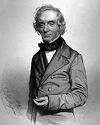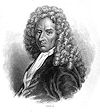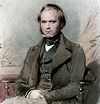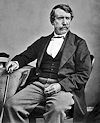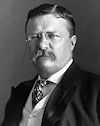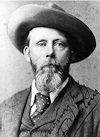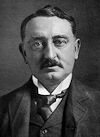For thirty years King Taapopi of the Uukwaluudhi traditional authority persisted with his goal of establishing a protected wildlife area in his homeland. For much of that time conservationist Chris Eyre shared the King’s commitment. Together, along a long and winding route, the two men turned this vision into reality, writes freelance film-maker and journalist Ginger Mauney.
In the mid-1970s, long before the concept of conservancies had taken root in Namibia, King Taapopi of the Uukwaluudhi traditional authority had a vision. It was inspired by childhood memories and fired by his wife’s support. He remembered a time when wildebeest, springbok and zebra roamed his homeland freely and in large numbers. He wanted to bring wildlife back.
The King’s idea came at an extremely difficult time in Namibia’s history. A war was being fought in the north, poachers operated with near impunity and traditional authorities lacked control. But by the late 1980s things were finally changing and King Taapopi knew this was the time to act. Even then, he was way ahead of his time. His vision, already more than 10 years old, to re-establish game in a core area in his traditional authority in a manner that would benefit the people living there, was still more than 10 years ahead of its time.
Fortunately it wasn’t only the King’s wife who shared his dream. King Taapopi knew and trusted Chris Eyre, a conservator with the Ministry of Environment and Tourism based in Opuwo. The King shared his idea of starting a small game reserve with Chris, who immediately recognised it as a wonderful opportunity for the Ministry to reach out and work with the people of Owambo. In fact, it was the first opportunity. For the next thirteen years, through many negotiations and despite political resistance and discouragement, the two persisted. Finally, in 2002, the dream became a reality.
However, turning a dream of a protected area in Uuk-waluudhi into reality was a long and circuitous route. To appreciate how far the idea of conservancies has come, it is one worth following.
After the King’s visit, Chris Eyre took the idea of establishing a conservation area in the traditional authority to Chris Weaver of the World Wildlife Fund. The area the King was interested in was north of Etosha National Park and south of Tsandi. It formed part of an old and important migratory route running between Etosha, Ruacana and southern Angola. Not only was there a history of wildlife in the area, but wildlife was also an important feature of the culture and folklore of the local people. Once the WWF had done an assessment, it became clear that there was potential for the King’s idea.
King Taapopi then had to elicit support from the local community, because the area under consideration for the future reserve was currently prime grazing land and cattle are also an important part of the culture and economy in the north. The King had strong support from the people of his generation who remembered wildlife and wanted to see game returned and the land brought back to life. But naturally there were others concerned about giving away grazing land and jeopardising their livelihood for what might turn out to be a pipe dream.
With the help of the then Deputy Minister of the Ministry of Wildlife and Tourism, Peter Illongo, negotiations were held with all members of the community. Boundaries for the future reserve expanded and contracted as time passed, and meeting after countless meeting took place. But as the negotiations continued, support was building up, and by 1996 legislation had evolved so that there was a framework for developing community-based conservation areas.
It was becoming clear to the community that the King’s idea had the potential for future eco-nomic, educational and re–creational benefits. Finally, with the support of the community and after years of hard work, 5 800 hectares of prime land with beautiful hills and views extending across the plains to Kaokoland, was set aside for the Uukwaluudhi Conservancy.
Now King Taapopi and Chris faced the next hurdle. The land had to be fenced and water points established before game could be re-introduced. With the hard work of Rural Waters, water points were built inside the conservancy area and importantly, also outside the conservancy. By providing direct assistance to the community farmers, greater support for the return of wildlife to the area was insured.
Finally, in 2003, wildlife from Namibia’s national parks was relocated to Uukwaluudhi. Species such as eland, hartebeest, springbok, kudu, zebra, giraffe, and black-faced impala are now successfully breeding in the conservancy, reclaiming an area and a place in the people’s imaginations. And in March of this year, for the first time, rare black rhino were taken from a protected national park and returned to a communal area. Today four black rhino roam the plains of Uukwaluudhi.
Now that the fences are up and the wildlife back, the emphasis is on developing the park for the benefit of the community. With the commitment and assistance of the World Wildlife Fund, Rössing Foundation, the Namibia Community Based Tourism Association and the Ministry of Environment and Tourism, investors are now interested in developing lodges in the area, which generate employment opportunities and income, and in placing the power to protect the land back into the hands of the community.
In 2003 His Royal Highness King Taapopi of the Uukwaluudhi Traditional Authority, and Chris Eyr, were jointly presented with the fourth Namibia Nature Foundation Environmental Award. Together they inspired the concept of conservancies. Their tireless efforts have had a positive impact on the expansion of wildlife areas and ensured that local communities have a stake in these areas for the benefit of the future of wildlife and themselves.
Today there is growing support for the concept of conservancies in northern Namibia. King Taapopi’s dream is now inspiring dreams in other areas of traditional authority. For example, King Kaluma is interested in protecting the donga areas and King Jaffet Makundi wants to establish a protected area for wildlife in Ongandjera.
Thus the Uukwaluudhi Conservancy is not only a dream come true; it is also an inspiration for the realisation of other such dreams.
This article appeared in the 2004/5 edition of Conservation and the Environment in Namibia.
